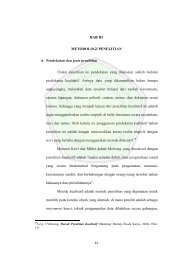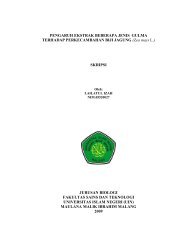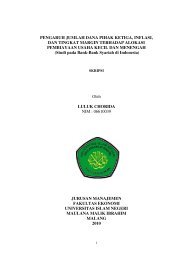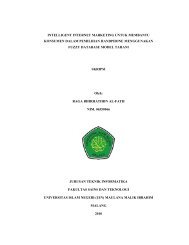CHAPTER I-V - Digilib UIN Malang
CHAPTER I-V - Digilib UIN Malang
CHAPTER I-V - Digilib UIN Malang
You also want an ePaper? Increase the reach of your titles
YUMPU automatically turns print PDFs into web optimized ePapers that Google loves.
Then, understanding and relevance are as a set of cognitive which is<br />
proved by the fifth principle of relevant theory which stated that the most<br />
accessible interpretation is the most relevant. It means that actually the most<br />
relevance is the easier to be understood. And it called by positive cognitive effect<br />
as the result of implementation the process of essential principles of relevance<br />
theory in understanding the utterance (spoken or written).<br />
The aim in Relevance Theory is to generate the cognititve effect of an<br />
utterance that are more important than enything else to which the interpreted<br />
could be attending to in the context. This proces is not guided by linguistic form<br />
but rather by what is accessible in memory and what has the most cognitive<br />
utility. Since this the single principle in relevance theory, an interpreter need only<br />
assume that the speaker believes his utterance is maximally relevant in order to<br />
compute its content. 19<br />
However, unlike Grice’s in Cooperative Principle, which speaker<br />
voluntarily follows or disobeys, Sperber and Wilson’s principle of relevance (the<br />
fact that utterances communicate a presumption of being relevant to the hearer or<br />
reader) is spontaneous and biologically rooted in human cognition.<br />
19 Op. cit. 2003: 75


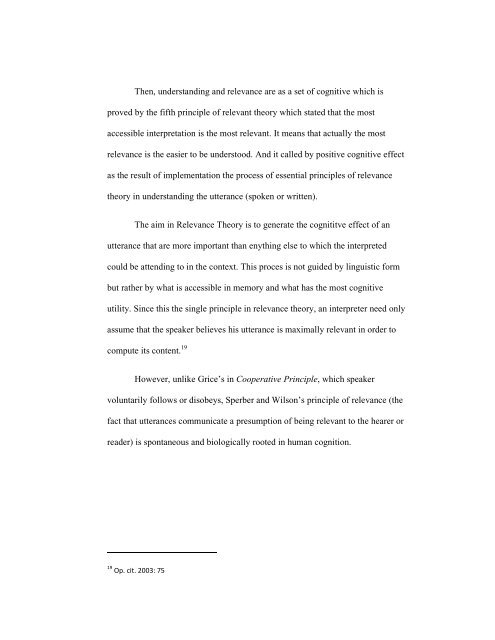
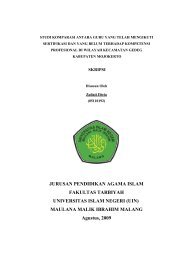

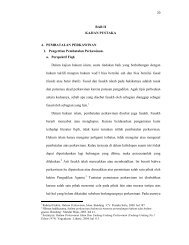
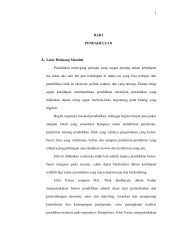
![Lampiran[1] - Digilib UIN Malang](https://img.yumpu.com/18300081/1/190x245/lampiran1-digilib-uin-malang.jpg?quality=85)
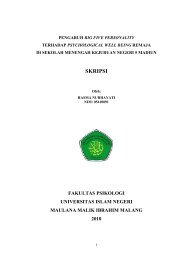
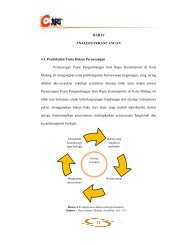
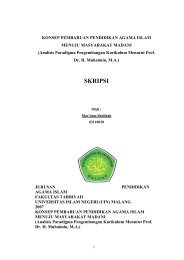
![Lampiran[1] - Digilib UIN Malang](https://img.yumpu.com/16335137/1/158x260/lampiran1-digilib-uin-malang.jpg?quality=85)
